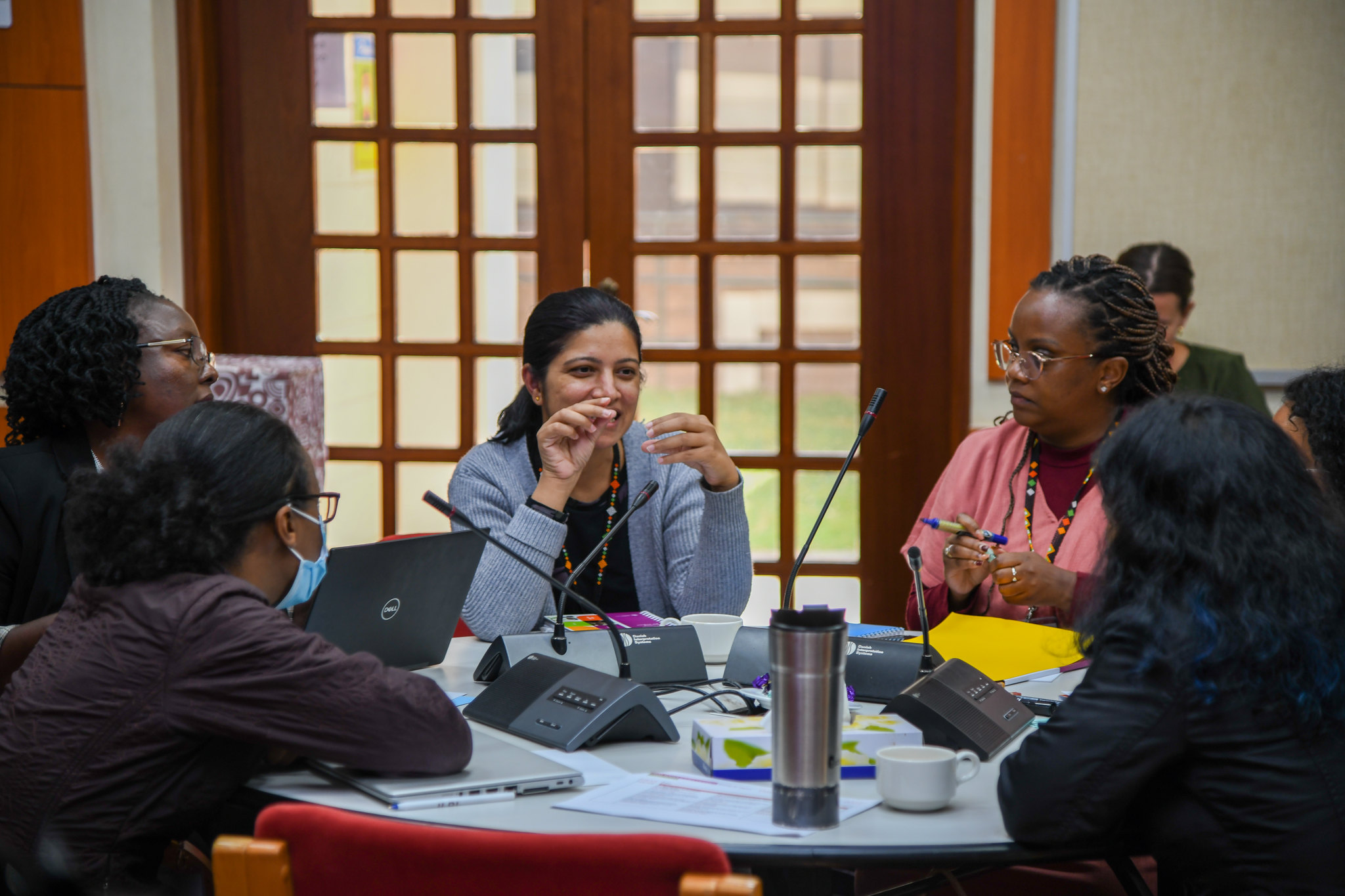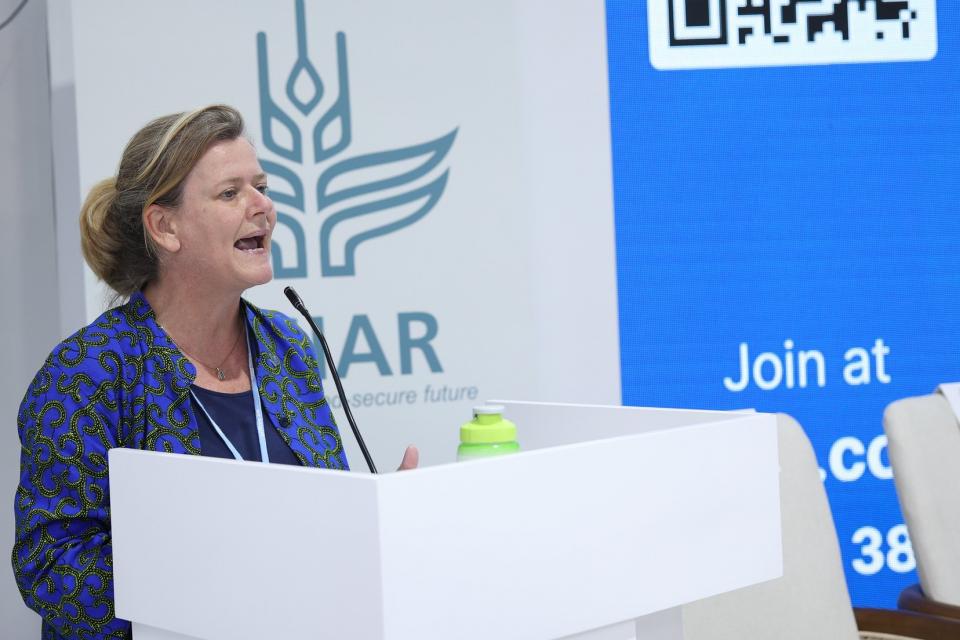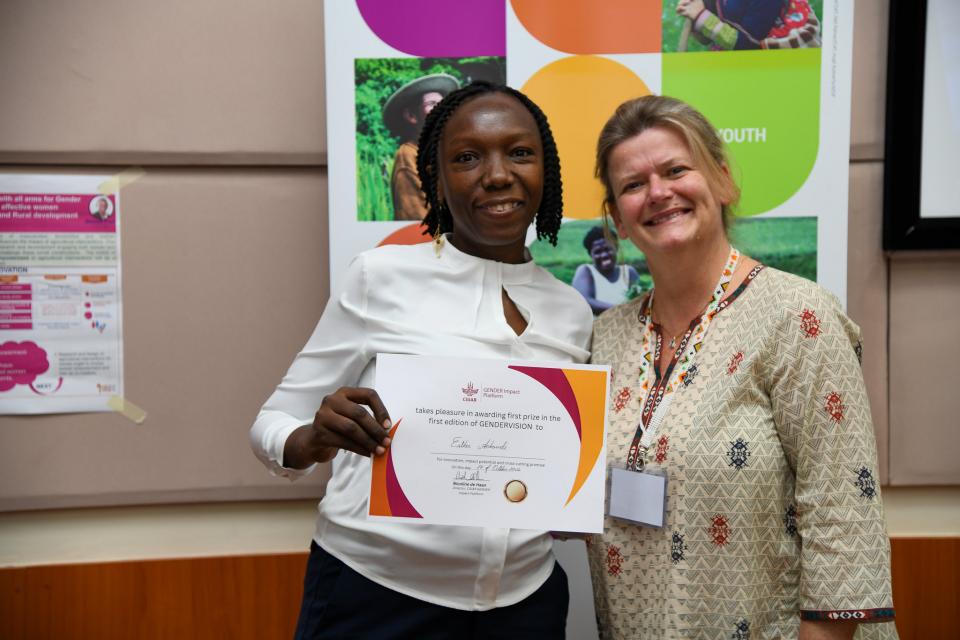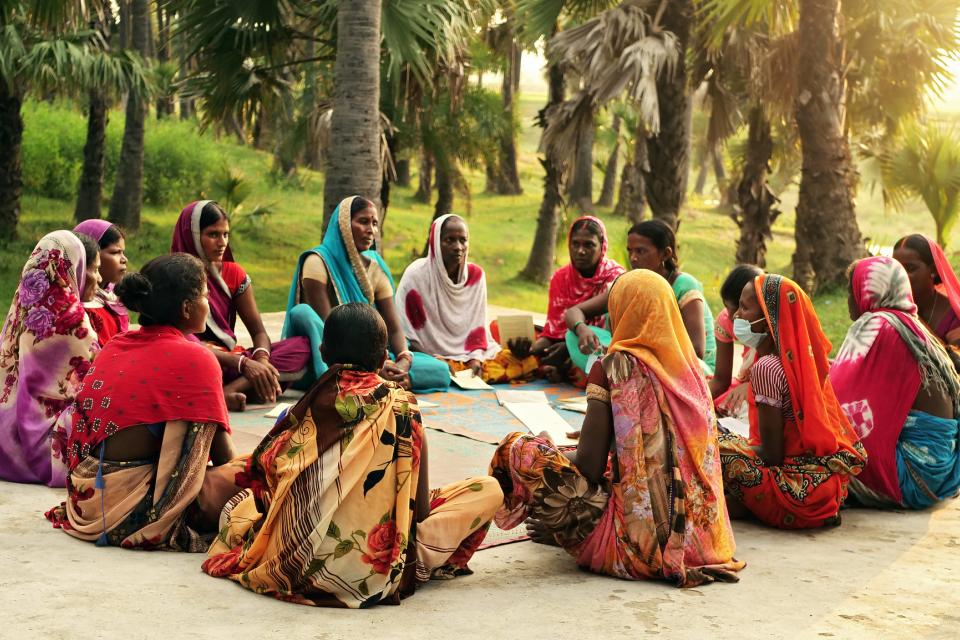How developing communities of practice can accelerate gender research
 Photo: N.Ronoh/CGIAR GENDER Impact Platform
Photo: N.Ronoh/CGIAR GENDER Impact Platform
“Gender research can be very exciting, but sometimes lonely, as often there is only one gender researcher in each project,” proposed Arwen Bailey, a knowledge sharing specialist at The Alliance of Bioversity International and the International Center for Tropical Agriculture (CIAT).
Bailey was introducing a discussion among CGIAR gender researchers on how communities of practice (CoPs) can help accelerate and improve gender research, as part of a three-day GENDER Science Exchange conference that took place in October in Nairobi, Kenya.
Bailey shared a classic definition of CoPs as
“…groups of people who share a concern or a passion for something they do and who learn how to do it better as they interact regularly.”
A CoP is an occasion for gender researchers to come together and engage with each other on a common purpose that unites them:
“CoPs link gender researchers to one another so that they can share experiences, problems, insights, resources, tools, data and knowledge to do their research better. This helps them to grow and develop in their practice through co-learning with others,” Bailey stated.
The CGIAR GENDER Impact Platform is putting this into practice right now with several CoPs that are emerging to meet different needs.
The 'Women’s Empowerment Measurement Validation Community of Practice (WE-Validate CoP)' was the Platform’s first CoP, and it aims for researchers and practitioners in CGIAR and beyond to share information and good practices around developing and validating women’s empowerment metrics. In addition, the Platform is now supporting the development of a new CoP focusing on gender-transformative research methodologies (the GTRM-COP). The GTRM-CoP is a classic example of how CoPs work.
According to Bailey, CoPs require three essential elements to be effective: a community, a purpose and a practice.
“In the case of the GTRM-CoP we already had a community as there was a group of gender scientists who started talking to each other in 2021 about how to co-develop and improve gender-transformative research methodologies in order to support more equitable relationships in the communities where we work. This, then, is the purpose of the community. Now what we are doing is finding ways to help them develop their ‘practice',” she explained.
To this end, the GTRM-CoP has decided to hone in on some specific topics where they can get concrete:
- Intersectionality: Looking at approaches and methods for factoring in other aspects of identity beyond gender, such as religion, age and disability
- Gender-transformative research processes and data: The key here is the focus on processes and data: How to make sure that the very research processes researchers use and the data collected have transformational potential
- Gender-equitable masculinities: Looking at research tools and approaches to understand better what it is to be a man and how the interactions between different expressions of masculinity and different expressions of femininity lead to different outcomes
- GENNOVATE tools and data: Building on the large-scale comparative project GENNOVATE to further develop the tools and processes and make accessible the data.
By focusing in on specific topics in this way, and sharing their experiences, gender researchers can improve their research practice, increasing efficiency and effectiveness in their work, which in turn leads to improved performance because of the value of learning from CoPs.
What leads to a successful community of practice?
Passion and interest in developing competence in gender research is key for a community of practice to be successful. Second follows participation. It is through participation that community members can leverage each other’s knowledge and experience. Bailey further emphasized the need for mentorship of young gender researchers:
“Educate your colleagues, help someone, mentor someone who is less senior than you.”
A successful CoP is where people are willing and comfortable to share not only their knowledge, but also vulnerabilities such as lack of knowledge.
“This is all about learning space. People do make mistakes and so you don’t have to fear,” said Bailey.
Bailey encouraged participants to embrace constructive criticism to create a successful CoP in gender research and at the same time to offer alternative solutions as this is one of the ways gender scientists can improve their practice and make it better:
“Share everything – including problems, failures, successes, tools, things that work and those that don’t,” Bailey said.
Community members have a responsibility for voicing what they would like to see as the value of the CoP, she added.

Some of the CGIAR gender researchers share their experiences during the GENDER Science Exchange conference (Photo: N.Ronoh)
A call to young researchers
Bailey called upon young researchers to join CoPs for their own growth and development:
“Join at least one community of practice because it’s a way of accelerating your learning, tapping into the experience of other people. Join the networks and know who to contact on different issues.”
Considering that many young researchers sometimes fear sharing their experiences, Bailey urged,
“Once into a CoP, as a young researcher, forget about the hierarchy. Ask questions. Don’t just sit back. Use the community and reach out to people for their advice. Ask them to help you design your research project or share their relevant papers with you. Don’t be shy – especially junior researchers.”
CoP experiences and challenges
Participants also shared their research experiences as far as CoPs are concerned.
“Being part of a community of practice for me is very important because of the support I get from my colleagues and the experiences shared. We also get to learn from each other, things I wouldn’t have known,” a participant shared.
“A CoP is great, but how do you get the time for it, considering that you have other work waiting for you?” another participant posed.
Bailey acknowledged that time is a challenge in making CoPs work and added:
“People have so much on their plate. If they perceive a CoP to be adding work to their work and not adding value to their work, they are not going to give it time. Because people are so busy, it must add value to their work all the time.”
Bailey underscored the need for CoP members to prioritize low-input activities with potentially powerful effects:
“The challenge is to make sure that it (the CoP) adds value with the lowest possible input and greatest impact. We must choose those activities that require low inputs but have potentially big results so that we use people’s time well. It must be about doing our job better!”
Integrating CoP values into organizational values
Building a successful CoP requires value for members, but also a recognizable value to the organization. When a CoP delivers value for both the members’ personal passions and interests, and also organizational strategic objectives, then it has hit 'the sweet spot'. A CoP cannot survive on goodwill and passion alone; it also needs institutional support. Research institutions might consider creating CoP frameworks in their work environment:
““If organizations recognize the value of CoPs in supporting learning processes and want to support them, it is critical that they integrate them in the organizational structure, and provide them with resources, sponsorship and leadership,” Bailey remarked.
When well designed, CoPs can provide a sense of community, which can in turn provide a framework for organizations to turn challenges and problems into opportunities for mutual learning.


